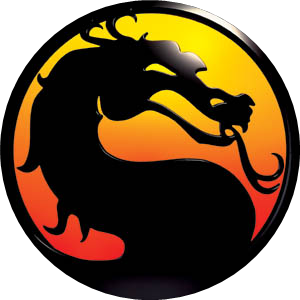
This week, I will be doing an analysis of the adaption of the popular fighting game, Mortal Kombat, to the big screen. Please note, this will only be in regards to the first film and not any later incarnations. Namely because I don’t like acknowledging that any of them existed.
Mortal Kombat was originally created by Ed Boon and John Tobias as a response to the popularity of Street Fighter II. Their idea was to make a video game based on live actors (allowing the game to have added realism), rather than based on cartoon like characters. The addition of extreme violence (i.e. Fatalities), was an added bonus towards controversy that spread throughout the later sequels. Ironically, as years have passed, Mortal Kombat has numbed the public to the concept of extreme video game violence. If a Mortal Kombat game exists, violence is expected with it now (with Mortal Kombat vs. DC being the exception).
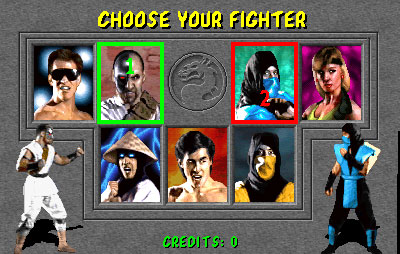
The original Mortal Kombat was released in 1992, with later sequels in 1993 and 1995. By the time of the third sequel, there was not a single arcade in America that didn’t have at least one (if not all three) incarnations of the game. The sensation over the game was huge by 1995, and it was only expected that such a sensation would be brought to the big screen. With perfect timing, the film version of Mortal Kombat (1995) was released to eager fans.
Now, how can a film based on a video game, famous for its violence and character mythology, handle being on the big screen? The answer: Pretty darn well.
The studios understood that 70% of Mortal Kombat‘s fans were essentially young teens (myself included). Fearing angry parents not allowing their kids into a rated R film, the movie was made to be PG-13. Basically, all excess gore and violence were removed. This was a surprise, but the film kept all the essential Kombat elements to keep its audience riveted.
Here is a basic list of all the must-have elements that the film did indeed portray:
- Character special moves
- Tag lines (i.e. “Finish Him”, “Fatality”, “Flawless Victory”, etc.)
- Finishing moves / Fatalities
- Great fight sequences and locations
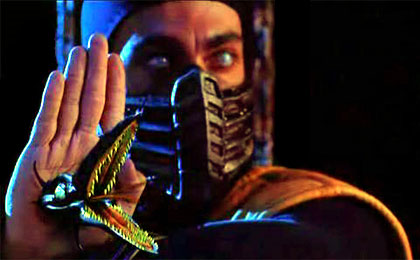
One of the best aspects of the film version of Mortal Kombat was the casting. It’s hard to argue against Christopher Lambert as Rayden, who gave the character much more personality and humor than had ever been portrayed in the game. Kudos also to Linden Ashby, who embodied all that was Johnny Cage, from his attitude to his sarcasm, and he was likely the only man who could pull off the “crotch shot” against Goro and make it somewhat look legit. The only weak link in the cast was Bridgett Wilson. This was due to her being a latecomer to the film and not fully trained for her sequences. This is why Sonya Blade doesn’t get as much fighting time as the rest of the cast. However her shortcoming does not drag the film down in any way, as she still remains Sonya Blade throughout.
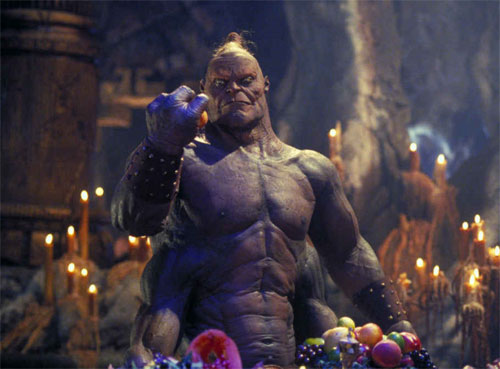
The film carries through the first two games, showing the tournament to save Earth from Outworld, along with a trip through Outworld itself. The film integrates several characters original to the second game (Kitana, Reptile, Shao Khan) into the main story of the first game.
While the film carries the storyline of the tournament well, along with minor subplots for each character, the only subplot (ironically, the largest in the Kombat game storyline), is written out with a single line. That being the story of the Lin Kuei, an assassination organization in which both Scorpion and Sub-Zero were members. Due to the complicated nature of the storyline, it was written out with a minor acknowledgement by Shang Tsung, in that both Scorpion and Sub-Zero are deadliest of enemies but slaves to his power. Any fan would know what he was referring to, but not anyone else.
By today’s standards, the film’s choreography is not as thoroughly impressive as it once was. However, you can also argue that the fighting in the original games isn’t as impressive as fighting games today. One can’t argue, however, against the enjoyment in the battle between Scorpion and Johnny Cage. Not only does this fight LOOK good, but it is flooded with classic lines and moves, and it even ends with a “Friendship” (probably the only one that makes sense in a game riddled with action and violence). I also highly recommend watching that scene in surround sound, as you can literally hear the harpoon whip around you from behind.
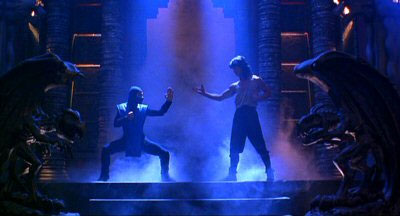
I also have to say kudos to the animatronic work of Goro. Though it’s quite obvious that he’s a massive puppet, the movements are quite realistic, and he literally does emote. Keep in mind, at the time of this film computer animation was still at its beginnings, and all we’d received at that time was really great dinosaurs and Tom Hanks telling President Kennedy he had to pee. For its time, it looks great!
Overall, the bringing of such a sensational video game series to the big screen was a success. The film, though panned by critics (who never understand video game based movies, in my opinion), had a big enough fan following to gross over $70 million. Films like this really are just for the fans, and the fans ate it up.
Up next! A three way analysis of the Japanese sensation, Battle Royale!


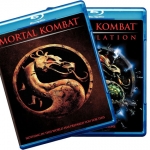




Nice review. The first Mortal Kombat film is one of my guilty pleasures.
This was a good review I agree with you a lot but one tiny problem :P
Scorpion wasn’t part of the Lin Kuei. In fact he was part of the Shirai Ryu Clan. Just thought I’d let ya know xD